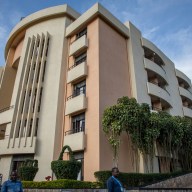Reader points out LRT elsewhere isn’t loud, slow
“There is some debate about how to define light rail transit.”
In a recent column about the TTC’s proposed Transit City light rail network, I suggested that some lines would be “similar to the 510 Spadina route.”
Jennifer Jiwa of Toronto writes, “If TTC is really going to do ‘light rail’ as they say, and as they show in their example pictures, then it won’t really be similar to Spadina and people should know that.
“I have always been perplexed as to why Torontonians insist on calling the streetcars ‘light rail.’ If you’ve ever been in a city that has real light rail, you know that Spadina and Harbourfront ain’t it.
“Light rail is almost always more than one car; it’s quiet, it’s low-floor with multiple (and wide) entry and exit points.
“I think if people understood better, that they aren’t just talking about loud, slow, hard-to-squeeze-into streetcars, there would probably be a lot more excitement.”
Transit City proposes to bring faster, more reliable service within reach of many areas of Toronto where riders now board transit vehicles that operate in mixed traffic.
The next step up from the status quo is BRT, or Bus Rapid Transit, where dedicated lanes separate buses from cars and trucks.
Distinct from Transit City, several BRT lines are already due for greater Toronto, to be located along existing roadways or hydro corridors.
As you go up the ladder of transit options, each one offers more speed, reliability and capacity — at a higher cost. The Transit City plan fits somewhere in the middle — much less expensive than subways or “heavy rail,” but significantly more effective than buses and streetcars caught in congestion.
There is some debate about how to define light rail transit — often called LRT —but it largely refers to medium-capacity rail vehicles that travel in exclusive lanes. Using that rough definition, most older TTC streetcar routes don’t qualify, but the Scarborough RT does.
Almost all new light rail lines on the planet have their own rights-of-way, whether along streets, near railway lines or in tunnels. Modern trams have low floors, can be coupled together and may be boarded without special platforms. This is the kind of vehicle that we can expect in Toronto, both to replace the TTC’s existing streetcars, as well as to run on new routes. Some of the Transit City lines would run partly underground, but a single type of vehicle is contemplated —one that is suitable for both old and new routes.
For details, look up “light rail” at www.wikipedia.organd see www.transitcity.ca. Another resource is www.lrta.org.
















